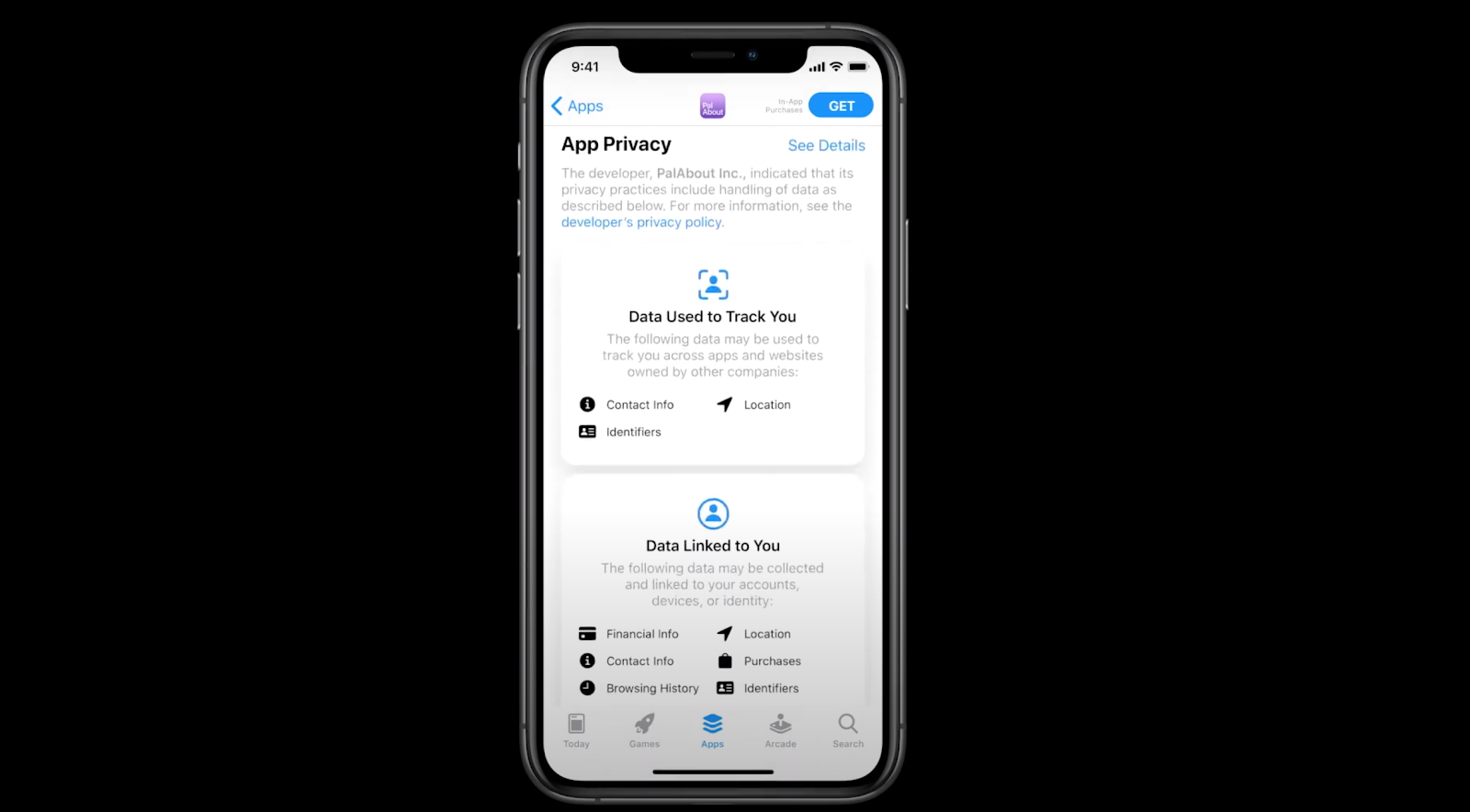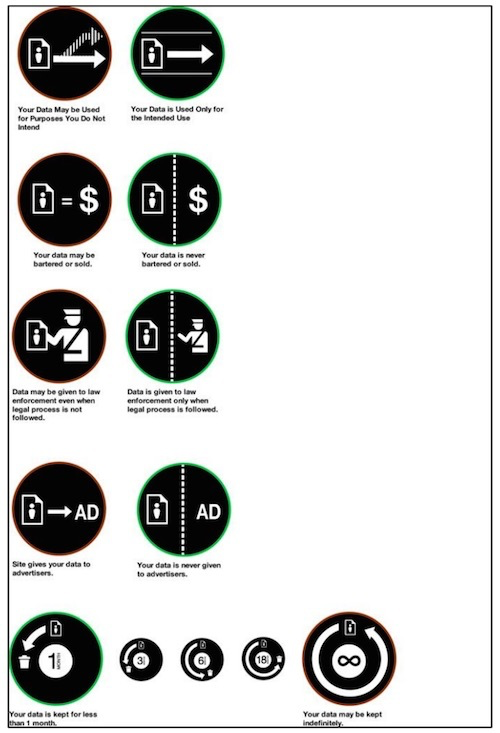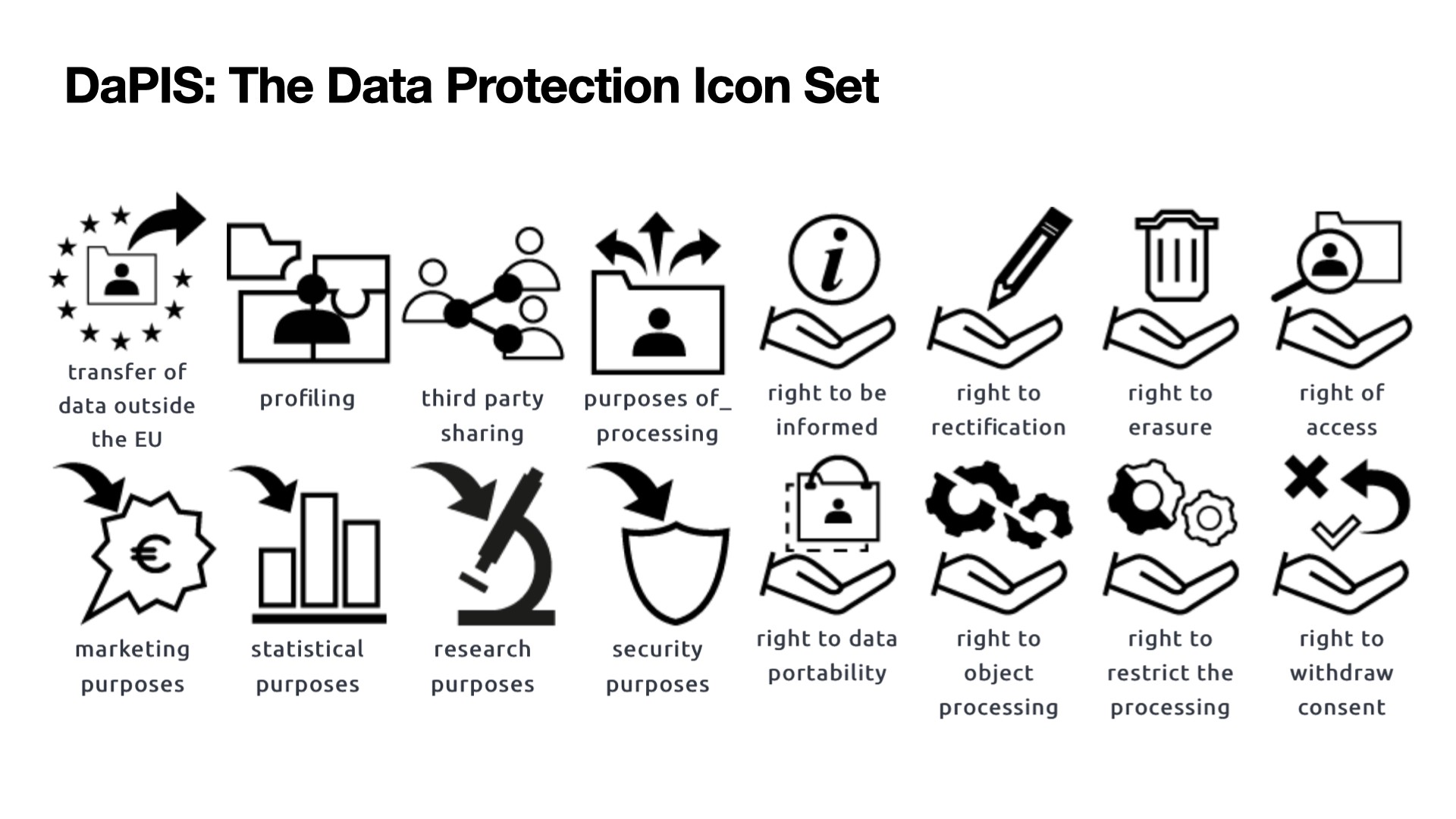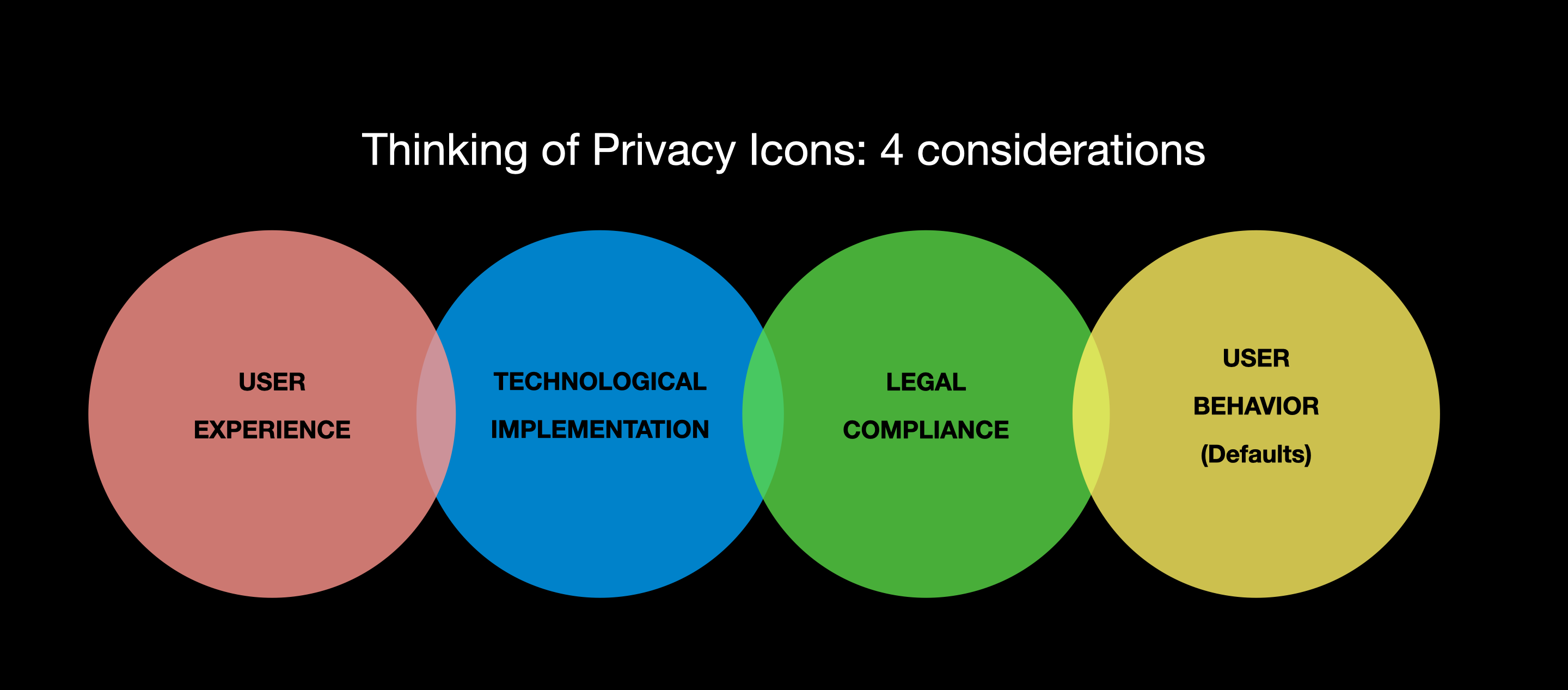隱私策略
During its 2020 Worldwide Developers Conference, Apple spent time on one of today’s hottest topics — privacy. During the past couple of years, Apple has been rolling out various public campaigns aiming to position itself as a company that respects its customer’s privacy. This year’s WWDC had some remarkable issues related to privacy-related features in Apple’s products.
在2020年全球開發者大會上,蘋果將時間花在了當今最熱門的話題之一-隱私上。 在過去的幾年中,Apple一直在開展各種公開活動,旨在將自己定位為尊重客戶隱私的公司。 今年的WWDC有一些與蘋果產品中與隱私相關的功能有關的重大問題。
“When Apple was founded, the proposition was, ‘This is the personal computer. This is your own data.’ … As the world has evolved, [we] have continued to think … that the data that you create, the things you do with your computer–those are yours and should be under your control. You should be aware of what’s happening with your data.” — Craig Federighi, Apple
“蘋果公司成立時的主張是,'這是個人計算機。 這是您自己的數據。” …隨著世界的發展,[我們]繼續認為…您創建的數據,您在計算機上所做的事情-這些是您的,并且應由您控制。 您應該了解數據的變化。” -蘋果的Craig Federighi
First of all, Apple reiterated its position that privacy is a fundamental human right and that it is trying to incorporate user privacy considerations into the product design process from the beginning. Furthermore, privacy for Apple has the following four elements:
首先,Apple重申其立場,即隱私是一項基本人權,并且它從一開始就試圖將用戶隱私考慮因素納入產品設計過程。 此外,Apple的隱私具有以下四個要素:
Data minimization: Apple aims to make sure that Apple and anyone else (namely, app developers) can access the minimum amount of personal data of individuals;
數據最小化 :Apple旨在確保Apple和其他任何人(即應用程序開發人員)可以訪問最少數量的個人個人數據;
On-device intelligence: Apple aims to avoid user data collection by processing as much information on the user device as possible (rather than sending it to a centralized server);
設備上的智能: Apple旨在通過在用戶設備上處理盡可能多的信息(而不是將其發送到集中式服務器)來避免收集用戶數據;
Security: Apple is making sure that everything that the individual does is secure;
安全性 :蘋果公司確保個人所做的一切都是安全的;
Transparency and control: Apple aims to help its users better understand what data is being collected so that the user can make their own choices on how that data is used.
透明度和控制力 :Apple旨在幫助其用戶更好地了解所收集的數據,以便用戶可以自行選擇如何使用這些數據。
In addition to that, Apple announced some new privacy features that are related specifically to apps that will be introduced in the coming months.
除此之外,Apple還宣布了一些新的隱私功能,這些功能與將在未來幾個月內推出的應用程序特別相關。
Tracking. Apple is making it harder for third-party apps to track its users. In its next mobile operating system, iOS 14 (forthcoming in fall 2020), Apple will require so-called third-party apps to ask to obtain user permission before they can start tracking. Similar to the Safari browser, app users will be able to choose whether they want to share their precise or approximate location.
跟蹤。 蘋果使第三方應用程序難以跟蹤其用戶。 在其下一個移動操作系統iOS 14(將于2020年秋季推出)中,Apple將要求所謂的第三方應用程序在開始跟蹤之前要求獲得用戶許可。 與Safari瀏覽器類似,應用程序用戶將可以選擇是否要共享其精確或近似位置。
Privacy Self-Reporting. Apple will start requiring application developers to self-report about the ways those applications access and utilize personal data of app users. For example, an app developer will have to disclose to Apple if they are collecting just “a little bit” of users’ data and with whom such data is shared.
隱私自我報告。 蘋果將??開始要求應用程序開發人員自行報告這些應用程序訪問和利用應用程序用戶個人數據的方式。 例如,如果應用程序開發人員僅收集“一點點”用戶數據并與之共享數據,則必須向Apple披露。
Privacy Icons. Apple aims to simplify the user experience and help users more easily and quickly identify the privacy settings of each app that they decide to download from the App Store. To achieve that, the app will utilize privacy icons in app descriptions on the App Store. Currently, apps distributed on the App store are required to have their privacy policies. However, as we all know, nobody bothers to read those privacy policies before or after downloading.
隱私圖標。 Apple旨在簡化用戶體驗,并幫助用戶更輕松,快速地確定他們決定從App Store下載的每個應用程序的隱私設置。 為此,該應用將利用App Store上的應用說明中的隱私圖標。 當前,要求在App Store上分發的應用程序具有其隱私政策。 但是,眾所周知,沒有人愿意在下載之前或之后閱讀這些隱私政策。
Transparency and Control. In order to facilitate a better understanding of how apps use user data, privacy icons will be displayed on the app description page. These privacy icons will show what personal data the app is able to access and whether it is going to track you. Something like this:
透明度和控制力。 為了更好地了解應用程序如何使用用戶數據,隱私圖標將顯示在應用程序描述頁面上。 這些隱私圖標將顯示該應用程序能夠訪問哪些個人數據以及是否要跟蹤您。 像這樣:

Such privacy-related updates are definitely valuable improvements to users of Apple devices. Kudos to Apple teams on striving to give individuals more control over their data. It goes without saying that this will contribute to better data literacy and a deeper understanding of how third parties are using personal data. At the same time, such an announcement by Apple should be seen in a broader context where companies directly interacting with their customers online are pressured by increasingly stringent data privacy regulations (GDPR and CCPA).
這些與隱私相關的更新對于Apple設備的用戶而言絕對是寶貴的改進。 Apple團隊致力為個人提供對其數據的更多控制權,這是他們的榮幸。 不用說,這將有助于提高數據素養和對第三方如何使用個人數據的更深入的了解。 同時,應該在更廣泛的背景下看待蘋果公司的這種宣布,因為越來越嚴格的數據隱私法規(GDPR和CCPA)給公司直接與客戶在線互動提供了壓力。
隱私圖標:回到未來 (Privacy Icons: Back to the Future)
Apple’s suggestion to use icons to inform about privacy issues is neither innovative nor new. Some of the first known initiatives to disclose internet privacy settings to individuals were taken by Mozilla. In 2011, Mozilla proposed the “beta” version of icons that could inform individuals on how online service providers use their data.
蘋果公司建議使用圖標來告知有關隱私問題,這既不是創新也不是新鮮事。 Mozilla采取了一些最早的向個人公開互聯網隱私設置的舉措。 在2011年,Mozilla 提出了圖標的“測試版”,可以告知個人在線服務提供商如何使用其數據。
The beta version of Mozilla’s Privacy icons addressed these four main areas of data privacy:
Mozilla隱私圖標的測試版解決了數據隱私的四個主要方面:
Retention period: How long does the company keep an individual’s data?
保留期 :公司將個人數據保留多長時間?
Third-party use: Is the individual’s data being used only for the intended purpose or is it also being used for other purposes (e.g., whether data is being shared with third parties and for what purpose)?
第三方使用 :個人數據僅被用于預定目的還是被用于其他目的(例如,是否與第三方共享數據以及出于什么目的)?
Ad networks: Whether the individual’s data is being shared with marketing or advertising companies.
廣告網絡 :個人數據是否正在與營銷公司或廣告公司共享。
Law enforcement: Whether the company is disclosing the data with law enforcement agencies (with or without a warrant).
執法 :公司是否要向執法機構披露數據(有或沒有手令)。

Mozilla隱私圖標的第二次迭代 (Second Iteration of Mozilla’s Privacy Icons)
The second iteration of Mozilla’s privacy icons was also published in 2011. This second version was prepared with the need in mind of simplifying communication of privacy policies to the users of various apps. This second iteration of icons somewhat resembles Mendeleev’s Periodic Table because they contain mostly letters:
Mozilla隱私圖標的第二版也于2011年發布。第二版的編寫是出于簡化與各種應用程序用戶之間的隱私策略通信的需要。 圖標的第二次迭代在某種程度上類似于門捷列夫的元素周期表,因為它們主要包含字母:
A closer look into this alternative iteration of Mozilla’s privacy icons reveals a couple of things. First, there are possibly more categories of information that could be displayed about the use of personal data. For instance, this second iteration distinguishes personal and non-personal information as well as many more purposes of use (e.g., use for advertising, geolocation, sharing with third parties and the duration of data retention). Second, this option choses the use of letters and symbols to communicate privacy policies.
仔細研究一下Mozilla隱私圖標的替代迭代,可以發現兩件事。 首先,可能會顯示更多類別的有關個人數據使用的信息。 例如,第二次迭代區分了個人信息和非個人信息以及更多使用目的(例如,用于廣告,地理位置,與第三方共享以及數據保留的持續時間)。 其次,此選項選擇使用字母和符號來傳達隱私政策。
Both of the approaches laid the foundation for discussions on privacy icons. Fast forward ten years. Some progress has been made, but still there is no consensus as to how to communicate about privacy policies to individual consumers.
兩種方法都為討論隱私圖標奠定了基礎。 快進十年。 已經取得了一些進展,但是在如何向個人消費者傳達隱私政策方面仍未達成共識。
The California Consumer Privacy Act and the GDPR imposed a number of requirements as to how companies have to communicate with consumers. They require that notices have to be sent every time a company’s data collection and processing practices change. These privacy-related notices and the requirement to get consumer’s consent lead to click-fatigue and result in users completely ignoring notices and warnings.
加州消費者隱私法案和GDPR對公司如何與消費者進行溝通提出了許多要求。 他們要求每次公司的數據收集和處理方式更改時都必須發送通知。 這些與隱私相關的通知以及獲得消費者同意的要求導致單擊疲勞,并導致用戶完全忽略通知和警告。
Another, more recent endeavor:
另一個最近的工作:

哪些食品標簽可以教我們隱私圖標? (What Food Labels can Teach Us about Privacy Icons?)
Historically, the idea of privacy icons can be traced back many decades when governments in various countries started to impose requirements for food product manufacturers to disclose to consumers the ingredients in the food products they bought. In its presentation at the WWDC, Apple’s Chief Software guru Craig Federighi drew parallels between food labels and privacy icons usage to explain what user data apps are going to use.
從歷史上講,隱私圖標的想法可以追溯到幾十年前,當時各國政府開始對食品制造商施加要求,以向消費者披露他們購買的食品中的成分。 蘋果公司首席軟件專家克雷格·費德里希(Craig Federighi)在WWDC上的演講中,在食品標簽和隱私圖標用法之間進行了比較,以解釋將要使用的用戶數據應用程序。
The efficiency and effectiveness of food labels have been widely discussed among social science scholars: Do consumers benefit from such labels? Do food labels justify their costs? Can the information provided in food labels actually affect the behavior of consumers?
食品標簽的效率和有效性已在社會科學學者中廣泛討論:消費者是否從此類標簽中受益? 食品標簽可以證明其成本合理嗎? 食品標簽中提供的信息是否會真正影響消費者的行為?
In the following paragraphs, let’s try to compare food labels and privacy icons and see what parallels can be drawn between them.
在下面的段落中,讓我們嘗試比較食品標簽和隱私圖標,看看它們之間可以畫出什么相似之處。
(a)隱私圖標作為自下而上的解決方案 ((a) Privacy icons as a bottom-up solution)
First, the most striking difference between food labels and privacy icons relates to their origins. Food labels are usually imposed by governments that are trying to alleviate information asymmetry and help individuals make better choices about the food they consume. However, government officials entrusted with the task of creating labels face a number of problems. Namely, it may be extremely difficult to anticipate how people will respond to food labels. Further, even if the impact on human behavior could be determined, it may still be hard to show the actual benefits (in monetary terms) of regulations requiring the use of food labels.
首先,食品標簽和隱私圖標之間最顯著的差異與它們的起源有關。 食品標簽通常是由試圖減輕信息不對稱并幫助個人對所食用食品做出更好選擇的政府強加的。 但是,負責創建標簽任務的政府官員面臨許多問題。 即,要預測人們對食品標簽的React可能非常困難。 此外,即使可以確定對人類行為的影響,仍然可能難以顯示要求使用食品標簽的法規的實際收益(以貨幣計)。
This problem does not seem to exist in the realm of privacy icons because, at least until now, there is no clear regulatory duty to use “privacy labels”. Instead, we can see that such initiatives to create privacy icons are “bottom-up”: companies that are providing services to their customers (such as Apple) are taking the lead and pushing to introduce privacy icons that are supposed to help individual consumers better understand their personal data.
這個問題似乎在隱私圖標領域并不存在,因為至少直到現在,使用“隱私標簽”并沒有明確的監管義務。 相反,我們可以看到,創建隱私圖標的此類舉措是“自下而上”的:向客戶提供服務的公司(例如Apple)正在牽頭并推動推出應該幫助個人消費者更好地使用的隱私圖標。了解他們的個人數據。
The fact that privacy icons are being developed by market players is quite remarkable.
市場參與者正在開發隱私圖標這一事實非常引人注目。
(b)隱私圖標具有明顯的經濟價值 ((b) Privacy icons have clear economic value)
Second, the introduction of new regulatory requirements, at least in the US, has to be justified economically. In practice, this means that the enacting government agency has to show that the societal benefits created by a new measure will be greater than costs to implement that measure.
第二,至少在美國,引入新的法規要求必須從經濟上講是合理的。 實際上,這意味著頒布的政府機構必須證明,一項新措施產生的社會利益將大于實施該措施的成本。
In the case of privacy icons, there is no need for the government to conduct any economic impact assessment studies; this is done by the companies who are betting on privacy icons. In the case of Apple, the mere fact that privacy icons are being introduced shows that Apple sees value in providing transparency to its users about their personal data.
就隱私圖標而言,政府無需進行任何經濟影響評估研究; 這是由押注隱私圖標的公司完成的。 就蘋果公司而言,僅引入隱私圖標這一事實就表明,蘋果公司認為向用戶提供有關其個人數據的透明性具有價值。
(c)人們處理信息的四種可能方式 ((c) Four possible ways of how people approach information)
It is very natural to assume that people are willing to receive information and that it will bring benefits to consumers. However, recent scholarly studies in the area of food labels show that there are four possible ways people react to information provided to them:
很自然地假設人們愿意接收信息,并且它將為消費者帶來利益。 但是,最近在食品標簽領域的學術研究表明,人們對提供給他們的信息有四種可能的React方式:
- There is a great deal of information that people do not care to receive (and, accordingly, see no value in it); 人們不愿意接收很多信息(因此,看不到任何信息);
There is a great deal of information that people want not to receive (and hence see it as a negative value);
還有就是,人們希望不接收(因此它看作是一個負值)的大量信息;
- In some cases, people do not want to know; 在某些情況下,人們不想知道。
In other cases, people want not to know.
在其他情況下,人們想不知道。
Such a phenomenon of “information avoidance” raises a question whether it makes sense to have privacy icons at all.
這種“信息回避”現象引發了一個疑問,即是否擁有隱私圖標絕對有意義。
(d)決策效用與經驗效用 ((d) Decision utility vs. Experienced utility)
Furthermore, it is widely understood that consumers suffer not only from the lack of information but also from various behavioral biases. For example, consumers may suffer from present bias (i.e., people tend to overvalue immediate rewards, while putting less worth in long-term consequences) or may be unrealistically optimistic (i.e., a belief that the individual herself is less likely to experience a negative event).
此外,眾所周知,消費者不僅遭受信息缺乏的困擾,而且遭受各種行為偏見的困擾。 例如,消費者可能會遭受當前的偏見(即人們傾向于高估眼前的獎勵,而對長期后果卻不那么看重)或不切實際的樂觀(即認為個人不太可能遭受負面影響)事件)。
When we look at privacy icons, there are two more behavioral biases that may become obvious: there is a clear gap between (a) the utility at the time when people are about to agree to a certain privacy-related choice (so-called “decision utility”) and (b) the utility actually experienced (so-called “experienced utility”). The problem with privacy icons is that it may not always be possible to provide a concrete and clear sense of experience in the future.
當我們查看隱私圖標時,還有兩種行為上的偏見可能變得很明顯:(a)當人們即將同意與隱私相關的特定選擇時,實用程序之間存在明顯的差距(所謂的“決策效用”)和(b)實際經歷的效用(所謂的“經驗效用”)。 隱私圖標的問題在于,將來不一定總是能夠提供具體而清晰的體驗。
隱私圖標和向以用戶為中心的數據生態系統的轉變 (Privacy Icons and the Move towards User-Centric Data Ecosystem)
Swiftly developing new technologies such as machine learning, edge computing, and differential privacy together with new data privacy regulations (mainly, GDPR and CCPA) are paving the way towards a user-centric data ecosystem.
快速發展的新技術(例如機器學習,邊緣計算和差異隱私)以及新的數據隱私法規(主要是GDPR和CCPA)正在為建立以用戶為中心的數據生態系統鋪平道路。
User-centric data ecosystem is built on the premise that individuals are able to centralize their personal data from various different sources and hold that data in their personal data clouds. Those data clouds are under full user control who can access that data and under what terms.
以用戶為中心的數據生態系統是建立在個人能夠集中來自各種不同來源的個人數據并將其保存在個人數據云中的前提下。 這些數據云在完全用戶控制之下,誰可以訪問該數據以及以何種條件訪問。
Privacy icons are going to play an increasingly important role in a user-centric data environment. However, it is not going to be a task that one single company can achieve. While Apple could be seen as the trend-setter, increasing data literacy among people coming from different cultures and different continents is the task that can be accomplished jointly by multiple stakeholders acting together.
隱私圖標將在以用戶為中心的數據環境中扮演越來越重要的角色。 但是,這不是一個公司可以完成的任務。 盡管可以將Apple視為引領潮流的人,但來自不同文化和不同大陸的人們不斷提高數據素養是可以由多個利益相關者共同行動共同完成的任務。

There are four main considerations that play equally important role in creating a user-friendly data privacy icons and notifications:
在創建用戶友好的數據隱私圖標和通知時,有四個主要考慮因素均起著同等重要的作用:
- The user experience has to be such that individual users are able to swiftly navigate through the main functionalities of the apps and technology they are using and be able to understand what personal data is at stake, and how that data is being used; 用戶體驗必須使個人用戶能夠快速導航他們正在使用的應用程序和技術的主要功能,并能夠了解哪些個人數據受到威脅以及如何使用這些數據;
- User experience goes hand in hand with software tools. Both of these have to be balanced, and require close work between UX/UI designers and software engineers; 用戶體驗與軟件工具齊頭并進。 兩者必須保持平衡,并且需要UX / UI設計人員和軟件工程師之間的緊密合作。
- Data literacy enhancing tools such as privacy icons and notices and notifications should be also in line with legal requirements (e.g., obtaining a legally valid consent); and 諸如隱私圖標,通知和通知之類的數據素養增強工具也應符合法律要求(例如,獲得法律上有效的同意); 和
- Privacy icons and other data literacy enhancing solutions should be created bearing in mind behavioral and decision-making patterns (e.g., thinking about the effects of opt-in and opt-out defaults). 應牢記行為和決策模式(例如,考慮加入和退出默認設置的影響),創建隱私圖標和其他增強數據素養的解決方案。
At Prifina, we see leveraging tools like icons to simplify the interface by which we become data literate and understand our choices. We believe this can lead to empowered consumers, where together with developers we can build applications and experiences that lift the individuals up with their data.
在Prifina上 ,我們看到了利用圖標之類的工具來簡化界面的界面,通過該界面我們可以理解數據并了解我們的選擇。 我們相信,這可以帶來授權的消費者,在這里,我們可以與開發人員一起開發應用程序和體驗,以提高個人的數據能力。
Besides, data privacy icons could become a powerful tool especially if the communities of UX/UI designers, software engineers, lawyers, and consumer rights advocates work togehter to simplify the user experience and user interface.
此外,如果UX / UI設計師,軟件工程師,律師和消費者權益倡導者共同努力簡化用戶體驗和用戶界面,則數據隱私圖標可能會成為強大的工具。
如果您想與我們的社區一起開發圖標,請與我們聯系。 如果您有興趣自己開發,可以注冊我們的開發人員帳戶并開始使用。 (If you have an idea for an icon that you’d like to develop with our community, get in touch with us. If you are interested in developing that yourself, you can sign up for our developer account and get started.)
與我們聯系并保持聯系 (Connect With Us and Stay in Touch)
Prifina helps individuals get bespoke value from their personal data and provides tools for developers to build applications on top of user-held data.
Prifina幫助個人從其個人數據中獲得定制價值,并為開發人員提供工具,以在用戶持有的數據之上構建應用程序。
You can follow Prifina on Twitter, LinkedIn, Facebook, and join our Slack: “Liberty. Equality. Data.”
您可以在Twitter , LinkedIn , Facebook上關注Prifina ,并加入我們的Slack:“ 自由。 平等。 數據。 ”
翻譯自: https://towardsdatascience.com/privacy-icons-4ca999a6f2db
隱私策略
本文來自互聯網用戶投稿,該文觀點僅代表作者本人,不代表本站立場。本站僅提供信息存儲空間服務,不擁有所有權,不承擔相關法律責任。 如若轉載,請注明出處:http://www.pswp.cn/news/389149.shtml 繁體地址,請注明出處:http://hk.pswp.cn/news/389149.shtml 英文地址,請注明出處:http://en.pswp.cn/news/389149.shtml
如若內容造成侵權/違法違規/事實不符,請聯系多彩編程網進行投訴反饋email:809451989@qq.com,一經查實,立即刪除!








)

 Mysq慢查詢日志)







)